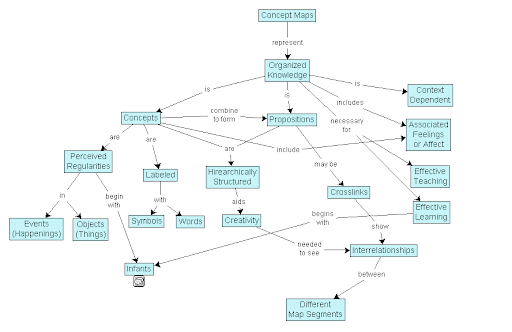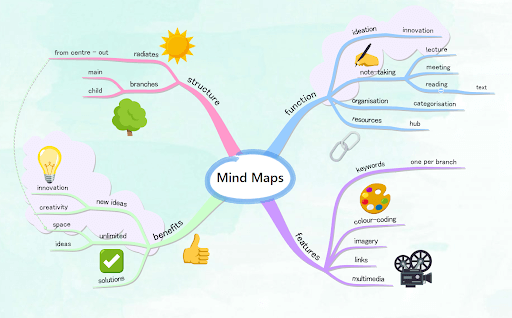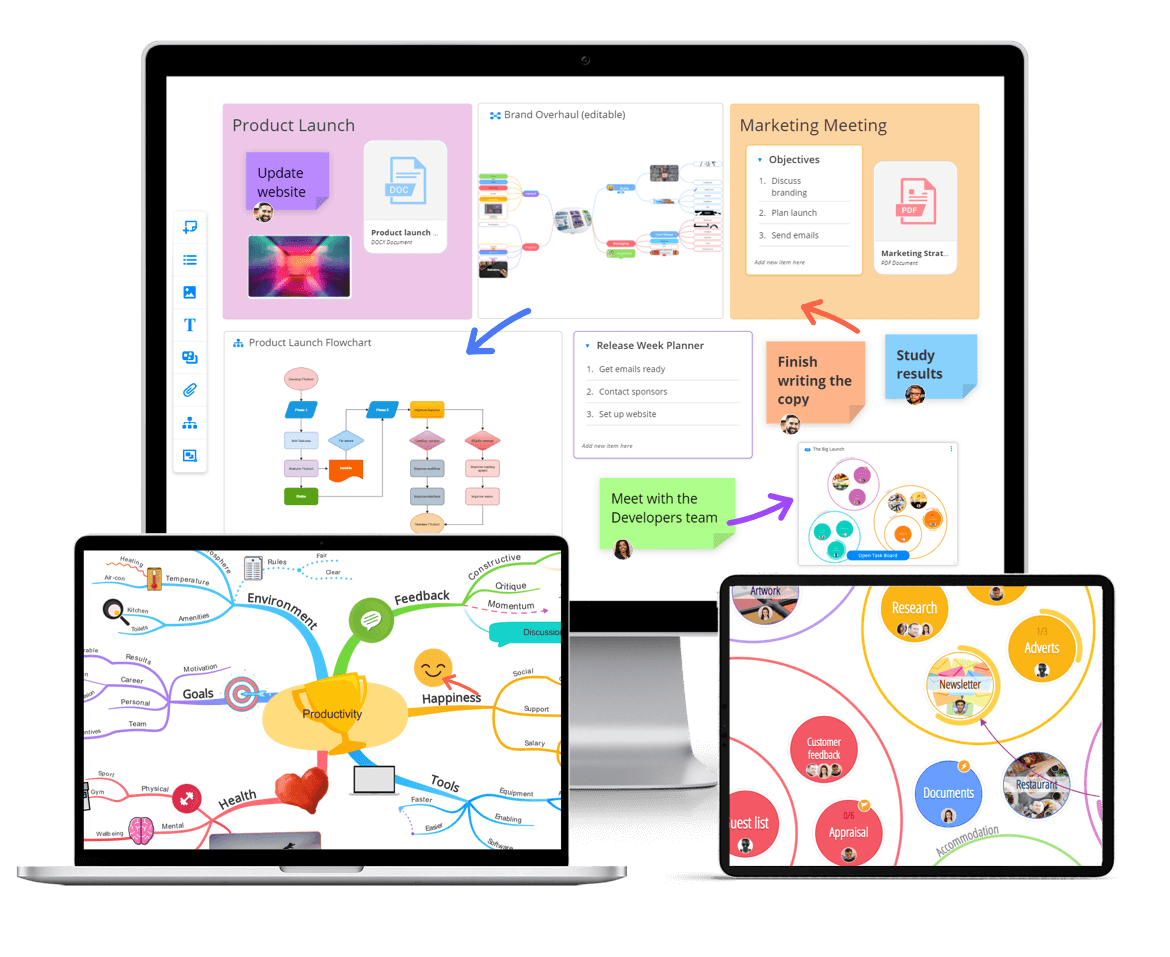February 10, 2021 (Updated February 23rd, 2023)
Mind Maps vs. Concept Maps

Mind maps and Concept maps are two terms often confused with one another. Although they may appear very similar on the surface, these two tools are visually different and carry their own distinctive functions. The most appropriate map for your project will depend on how you intend to arrange your information and what you hope to achieve from creating it.
Concept Maps
Why use a Concept Map?
- For knowledge representation (display what you already know)
- To identify and explain relationships and connections between various concepts
Probably the most formal of the two, concept maps are diagrams most often presented in a downward-branching hierarchical structure. Concepts are joined with arrows that contain linking words that describe the relationship between two concepts, and typically contain a verb. Usually, the concept map begins with general concepts in the top half and more specific concepts arranged hierarchically below. Concepts may also be cross-linked with each other to depict topics with multiple connections. This makes concept maps ideal for displaying complex relationships between segments of information.
What does it look like?

Mind Maps
Why use mind maps?
- For idea generation (ideation and generative thinking) particularly when looking for a creative solution to a problem
- For note-taking – in a meeting, lecture or when reading a text
- To organise ideas – branches allow for categorisation
- To gather resources – attach hyperlinks, images and other multimedia to a ‘project hub’
With less of a focus on relationships, mind mapping relies more heavily on word-association to trigger further ideas. Though it still remains hierarchical with more general ideas closer to the central topic, a mind map radiates from the centre out, in all directions, representing freedom of thought. Mind maps are much more visual than Concept maps with colour-coding and imagery being key features of the tool. Renowned for encouraging creativity, mind mapping is great for generating new ideas and innovative solutions.
What does it look like?

In addition to boosting your creativity levels, and increasing your memory, mind mapping is also proven to improve cognitive functions such as your ability to learn and analyse information. With their highly visual nature, mind maps are also more adaptable amongst various ages and professions. So, whether you’re a college student, freelancer, school teacher or manager of a marketing team, discover how mind maps can benefit you.
Conclusion:
Although they look like similar concepts, mind maps and concept maps have very different characteristics and uses. Concept maps tend to be more hierarchical in nature- having a downward-branching hierarchical structure. While mind maps have an outward radiating structure. Concept maps are more concerned with displaying complex relationships but with mind maps, representation of freedom of thoughts through word associations is more important. Mind maps are visual means of generating ideas, creativity and innovation.

The all-in-one remote work toolkit
Ayoa is an all-in-one platform that allows teams to collaborate seamlessly while working from home. Integrations with Zoom and Google Drive allow you to stay productive and avoid switching between apps.
Try it for free